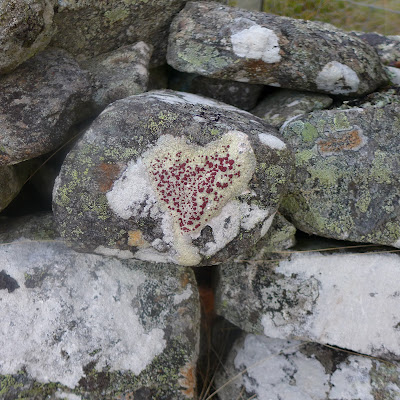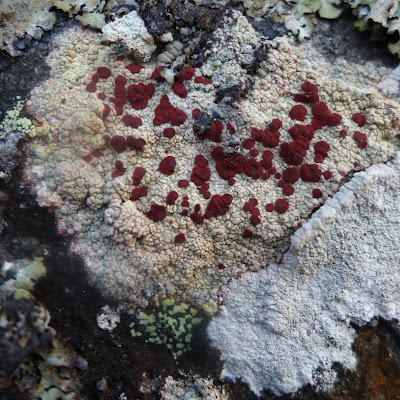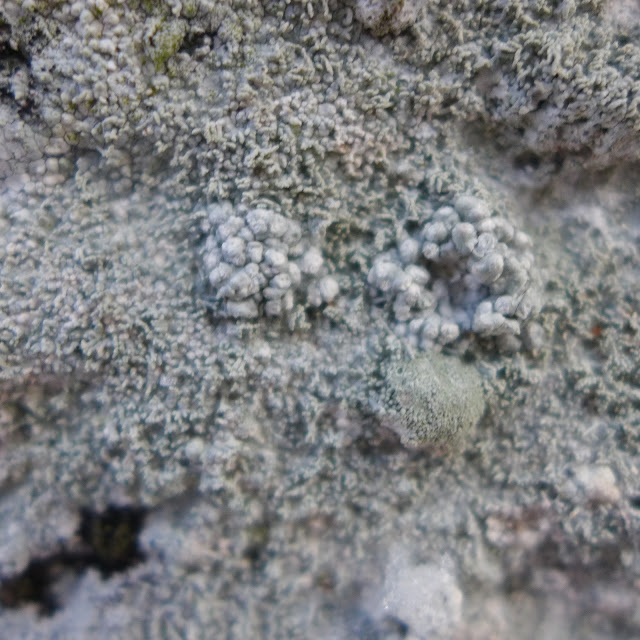I am still enjoying looking out for lichens and I am
gradually getting more familiar with the names.
I have joined a FaceBook page called Scottish Lichens where people are very
helpful and give advice on identifying lichens from your photos.
There is a dry stone wall just by the first cattle grid at the top of Glen Road. There wasn't much to see when I visited it on this day!
However, when the snow has melted, it is full of interesting patterns formed by lichens. Most of the lichens are the crustose ones – they look as if they are painted on – and are stuck to the surface of the stone. They don’t come off if you rub them.
Here are a few – some with names.
 |
| Rhizocarpon geographicum - Map lichen |
 |
| Ophioparma ventosa - Blood spot lichen |
 |
| The "blood spots" are actually reproductive structures. |
The blood spots release spores which have to find the right alga before they can grow into another lichen.
The next one is like a miniature coral, Pertusaria corallina
(That's snow as well!)
 |
| Pertusaria corallina |
It is covered in tiny "fingers" called isidia. It is one way a lichen spreads itself, as when they break off they can start to grow elsewhere. They are like little packets with both the fungus and the alga so it has everything it needs to start growing if it finds a suitable spot.
This rust coloured one is probably Lecidea lithophila. "Stone lover" (litho= stone, phila=lover). The white, red and black parts are all the same lichen. You can see some Map Lichen near it.
Next time you are out for a walk, take time to look closely at walls and boulders. You may be surprised at what you can find.





No comments:
Post a Comment